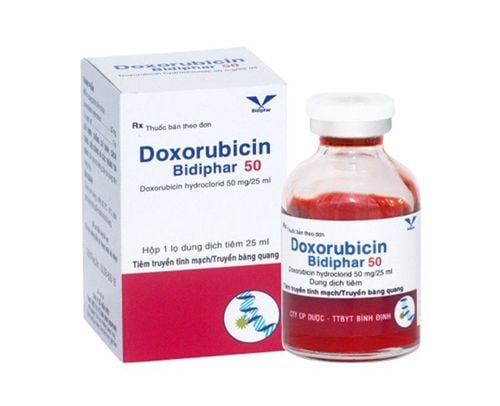This is an automatically translated article.
Advised by Doctor Department of Pediatrics - Neonatology - Vinmec Hai Phong International General Hospital
Iron stagnation in infants is a rare disease, first described in 1957. The disease causes iron stagnation in all organs in the body, especially the liver – the cause important for early and severe liver failure in children.
1. Causes of iron retention in infants
The cause of iron deposition disease in infants has not been found clearly. According to Whitington, the disease may be caused by immune factors from the mother transmitted to the fetus through the placenta, attacking and damaging liver cells (factors causing immune hepatitis). Other hypothesized causes include: congenital metabolic disorders or peripartum infections.
2. Mechanism of disease
The characteristic iron stagnation occurs during fetal life (third trimester) or liver failure immediately after birth or the first week postpartum. The rate of disease in newborns is high if in the previous birth, the mother gave birth to the child with iron stagnation.

3. Symptoms and signs of iron stasis in infants
Suspected symptoms: intrauterine growth retardation (fetal malnutrition), premature birth due to placental edema, oligohydramnios or polyhydramnios.
Recognizing signs: babies have early and severe liver failure after a few hours or days after birth such as:
Jaundice, hypoglycemia, blood clotting disorders Edema, oliguria, anuria, ascites
4. Diagnosis of disease
Children should be screened for diagnosis when:
History: the mother gave birth to the child with iron deficiency disease in the previous birth. Fetal growth retardation, malnutrition Other blood tests: low Tf saturation, low TTBC and high Ferritin MRI: shows iron deposition in liver and other organs. Biopsy: liver with iron deposition in organs such as liver, heart, pancreas... However, liver biopsy is often contraindicated because children have coagulation disorders. Differential diagnosis:
Neonatal hepatitis: viral hepatitis, metabolic liver disease, postpartum infection; Most of these diseases make a full recovery. Metabolic diseases: anti 1-anti trypsin deficiency, cystic fibrosis, galactosemia

5. Treatment of iron stagnation in infants
Treatments for iron stagnation in neonates are still being discussed, including:
Blood transfusion High dose immunoglobulin (IVIG) transfusion. According to several studies, if a mother has had a sick child in a previous pregnancy, high-dose IVIG infusion from 14 weeks of gestation significantly reduces the risk of developing the disease. Liver transplantation Combination therapy with antioxidants and some drugs has not been shown to be effective.
6. Prevention of iron stagnation in infants
Iron stagnation in infants has a severe prognosis, however, if diagnosed and treated early, with a combination of highly effective treatments, the child's life can be saved.
To register for examination and treatment at Vinmec International General Hospital, you can contact Vinmec Health System nationwide, or register online HERE
References:
Update: Acute liver failure in children: Etiology and evaluation Whitington P.F (2007). Neonatal Hemochromatosis: A Congenital Alloinnune Hepatitis. Semina in liver disease, vol 27 number 3 MORE:
Metabolic disorders in neonates: What you need to know Differentiating physiological and pathological neonatal jaundice Complications of acute liver failure













